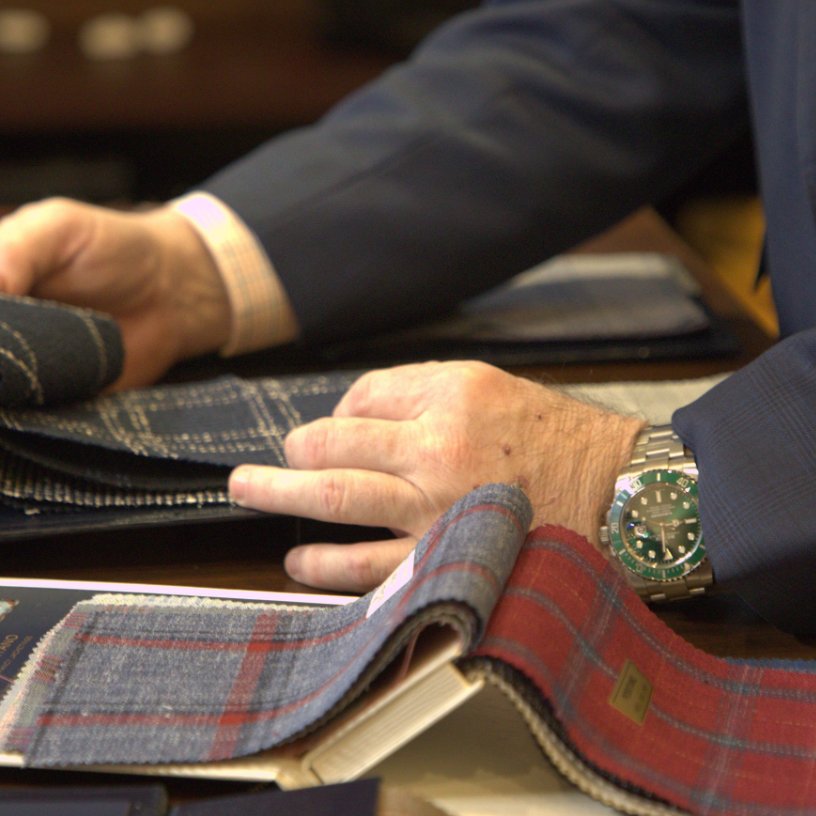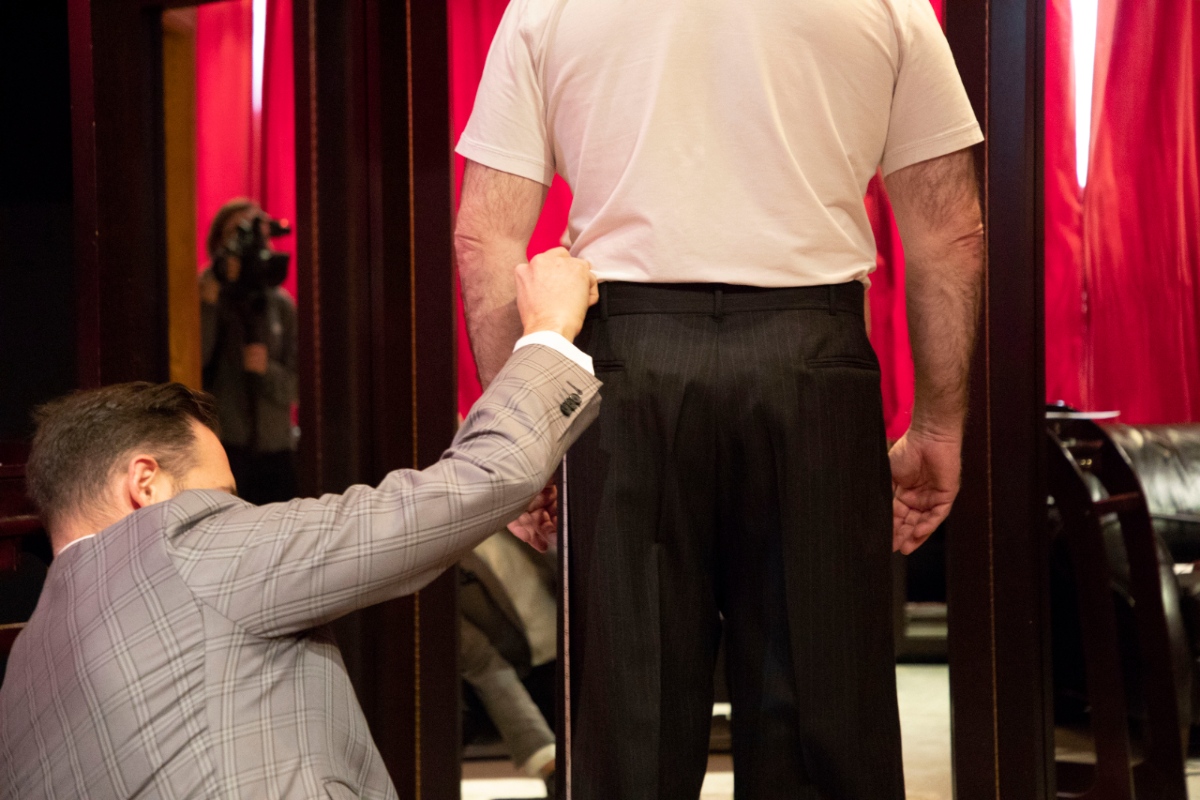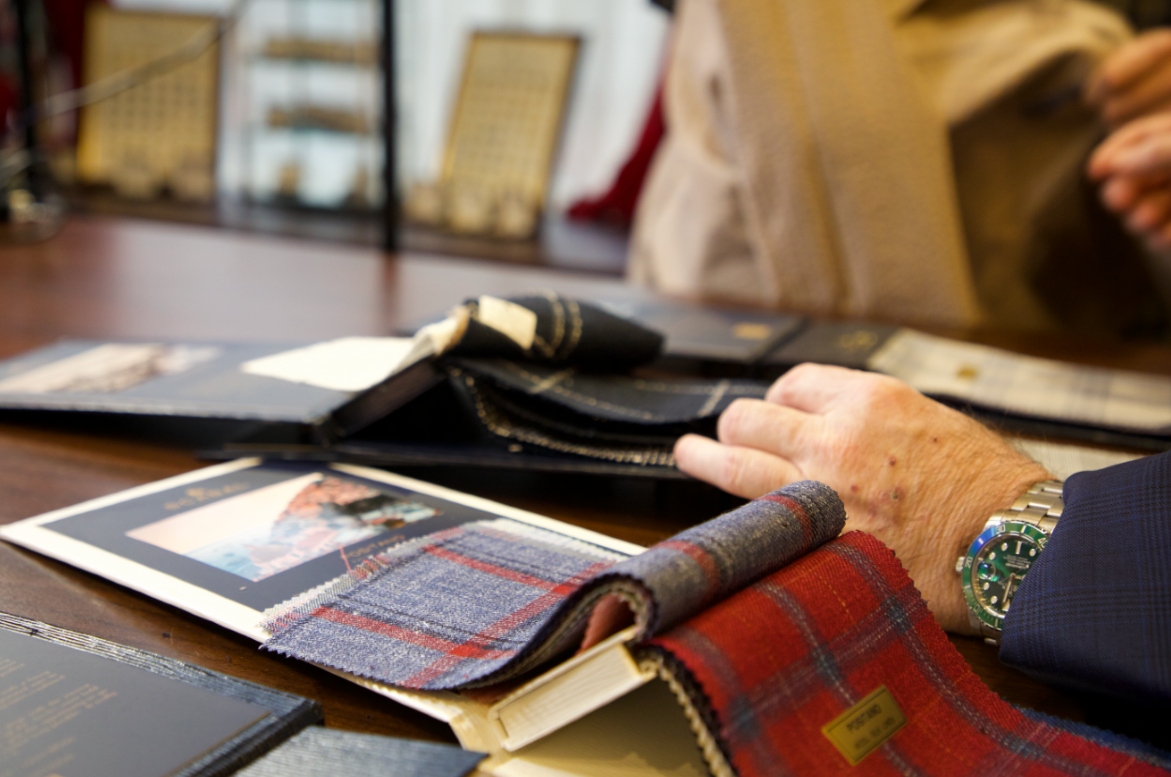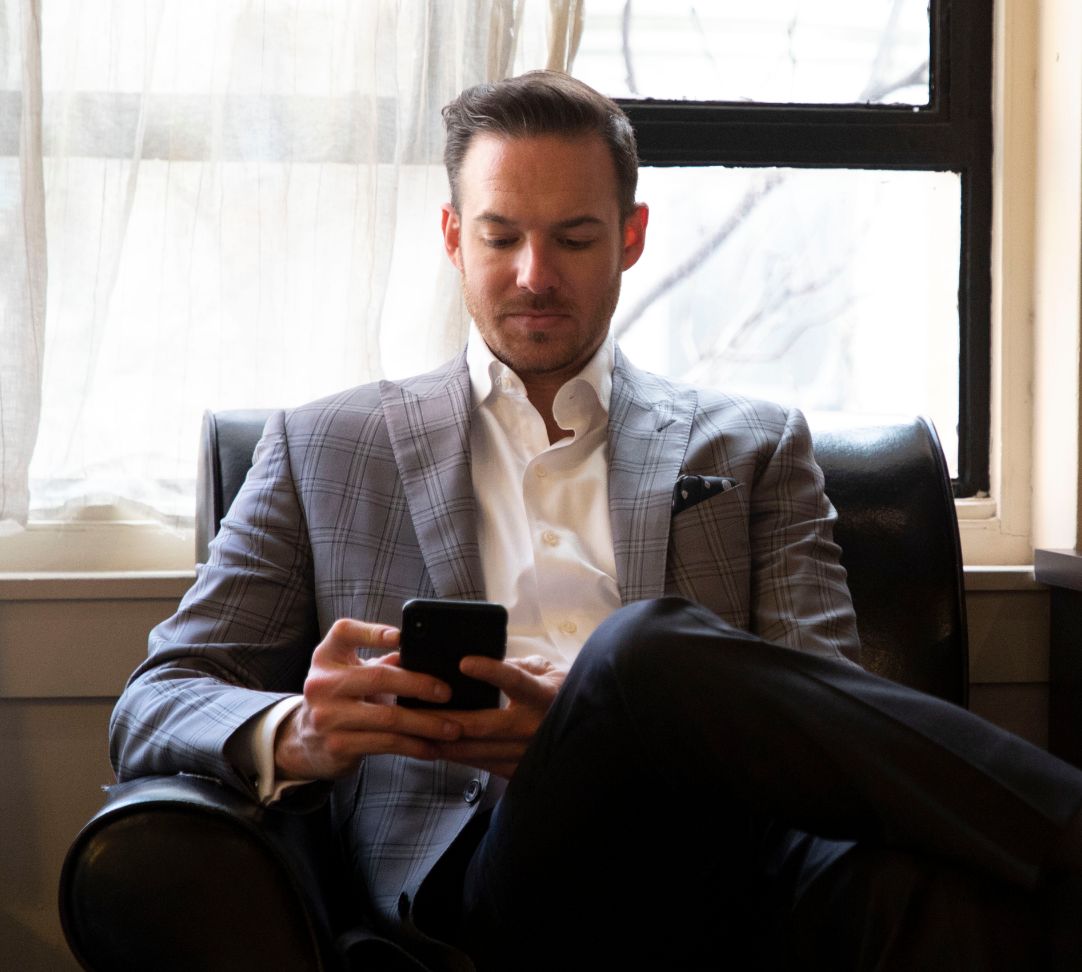The term ‘custom suit‘ is thrown around more and more as the industry grows. Those in search of a quality garment may find it difficult to understand what they are actually purchasing. In this blog, we are diving into what goes into designing your own suit and the two main styles that are available: bespoke and made-to-measure.
Designing A Suit
 When designing either a bespoke or made-to-measure suit, you will select the fabric, style, buttons, shape, and lining. Every detail is left up to you. Due to the endless combinations available some people find this process intimidating. This is where an image consultant like the professionals at Henry A. Davidsen comes into play. We can help guide you to the best possible choices with your image, goals, and personal style all in mind.
When designing either a bespoke or made-to-measure suit, you will select the fabric, style, buttons, shape, and lining. Every detail is left up to you. Due to the endless combinations available some people find this process intimidating. This is where an image consultant like the professionals at Henry A. Davidsen comes into play. We can help guide you to the best possible choices with your image, goals, and personal style all in mind.
So, what is the difference between made-to-measure and bespoke? Simply put, it all has to do with the pattern.
Bespoke Suits
 In fashion design, a pattern is a template from which the parts of a garment are traced onto fabric before being cut and assembled. Patterns are usually made out of paper or materials such as cardboard.
In fashion design, a pattern is a template from which the parts of a garment are traced onto fabric before being cut and assembled. Patterns are usually made out of paper or materials such as cardboard.
Bespoke suits are entirely custom. Besides selecting all the design details that can be seen, the pattern used to make the garment is mathematically drafted from your exact measurements. When purchasing a bespoke suit at Henry A. Davidsen, our image consultants will take approximately 23 measurements. The tailor then uses these measurements to create the pattern that is laid over the fabric and used to cut the suit.

Before cutting your final piece, we like to have a scrap suit made. A scrap suit is a mockup of a garment made from ‘scrap’ fabric. Scrap fittings are important because during the process of creating a suit the fabric will be pressed, sewn, and manipulated. We want to avoid manipulating your final fabric as much as possible. The scrap suit allows us to make any refinements to the shape and measurements before the tailor cuts your final piece.
The term bespoke comes from the early days of tailoring where a bolt of fabric was set aside for a customer because it had been purchased or ‘spoken for’.
Made-To-Measure Suits
 Made-to-measure suits still give you the freedom to select all the design options, but the pattern with which the fabric for the suit is cut from is a pre-existing stock size. After your measurements are taken and sent off, a tailor will alter a pre-existing pattern to your sizes. This process involves taking 23 exact measurements; however, there are limitations to how much a pattern can be altered. Pre-set ratios between the chest, shoulder, and back can only be adjusted within the same ratio.
Made-to-measure suits still give you the freedom to select all the design options, but the pattern with which the fabric for the suit is cut from is a pre-existing stock size. After your measurements are taken and sent off, a tailor will alter a pre-existing pattern to your sizes. This process involves taking 23 exact measurements; however, there are limitations to how much a pattern can be altered. Pre-set ratios between the chest, shoulder, and back can only be adjusted within the same ratio.
There is generally more machine work involved in made-to-measure garments and a limited amount of hand work; as a result, they tend to be less expensive than their bespoke counterparts and therefore serve as a good introductory customized garment for a lot of men.
Conclusion
In previous posts, this blog has dissected the elements that make up a fine suit. The three main variables come down to fabric, construction, and fit. Bespoke and made-to-measure suits deal primarily with the fit of a suit so it is important to have a grasp on the other factors. Explore these other entries to learn more.
Henry A. Davidsen specializes in bespoke suits, made-to-measure suits, and quality custom shirts in Philadelphia. With roughly 30,000 fabric options to choose from and professional direction from our certified image consultant, we can help you select the best option and design for your vision. Contact us today to schedule a consultation.



